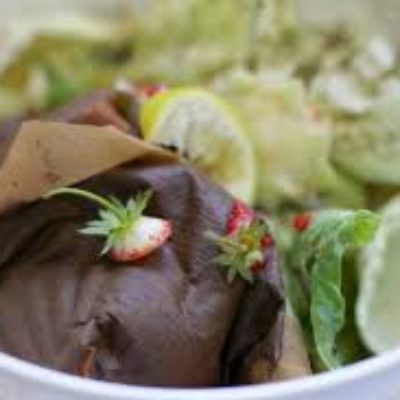Date: October 2, 2022
Types of compost
We make compost in lots of different ways, from lots of different materials. This short blog describes a bit about some of them.

Green waste compost:
This is what we make from the waste and debris from tidying up our gardens: hedge trimmings, grass cuttings, weeds etc. If we make it properly – balancing any wet squidgy grass with lots of brown materials, ensuring that the mix is neither too wet nor dry, dense nor loose – then it is easily done. We can either use the quicker but more labour-intensive hot composting method, or a slower cool composting method.
The resulting compost should be crumbly and spongy. It will greatly improve soil health, structure, and microbial population. It will facilitate the best combination of drainage and moisture retention, increase soil microbial populations, and encourage earthworm activity.
Its nutrient value for plants will depend on what ingredients went into making it – grass cuttings and weeds contain a lot of nutrients that will become available in the finished compost. Green waste compost from woodier materials will be a bit more acidic and fungally-dominated, and will especially suit perennial plants. Compost containing more green materials will be more bacterially dominated, which is good for annual plants.
Worm castings:
Castings is the name for worm poo, or compost produced when worms eat stuff and digest it.
Worms are an effective solution to composting fruit and veg waste, and a wormery can work well in a small space where many other composting systems are not an opetion.
Worm castings tend to be dense and moist. They cannot be used as a growing medium on their own, but can be very beneficially mixed with other soil or compost, or used as the basis for a compost tea feed for plants.
Castings are usually derived from fruit and veg waste, so they contain a lot of nutrients which are slowly released. They are an excellent addition to the soil for hungry plants, as a top dressing to be watered in, or as an ingredient in a potting mix.
Worm castings contain a lot of beneficial bacteria and enzymes, and help to support disease and pest resistance in plants.
Leaf mould:
Leaves from deciduous trees, if kept in a moist and aerated environment, will decompose by a fungal process into leaf mould. The process takes two years, although this timescale can be shortened by shredding the leaves.
Some people also accelerate the process by adding high-nitrogen amendments such as grass cuttings, coffee grounds, nettle tea or even urine, but strictly speaking this is not pure leaf mould as the extra nitrogen changes the biological processes involved.
Leaf mould has a wonderfully loose and crumbly texture. It is low in nutrients so it is an excellent medium for propagating seeds – especially those of woodland trees, for which it is their natural growing environment.
Leaf mould has a high fungal content and encourages development of mycorrhiza, which facilitates plants to regulate and optimise their intake and exchange of nutrients and water with soil organisms and other plants nearby.
Adding leaf mould to soil improves its structure and moisture retaining properties. Leaf mould is slightly acidic, and is beneficial to acid-loving plants and perennials.





